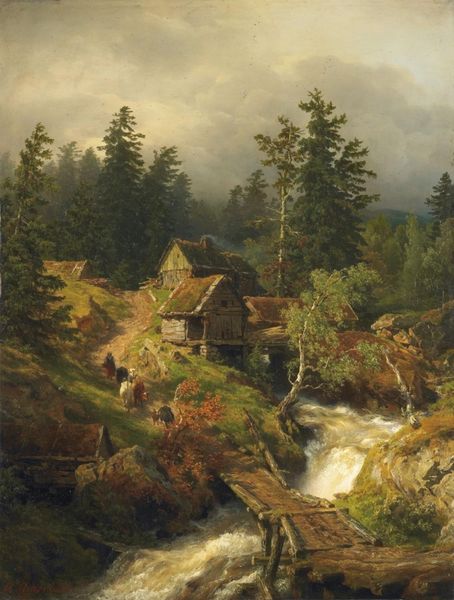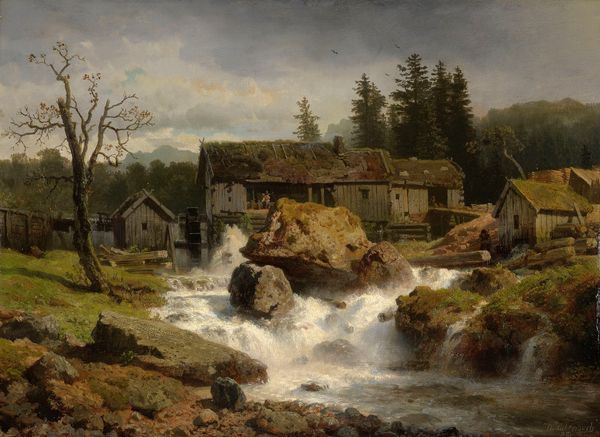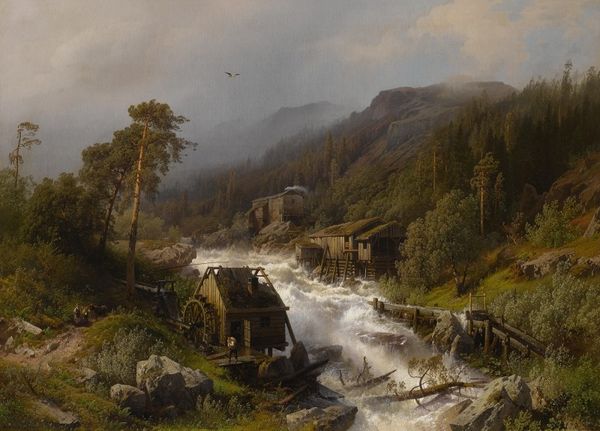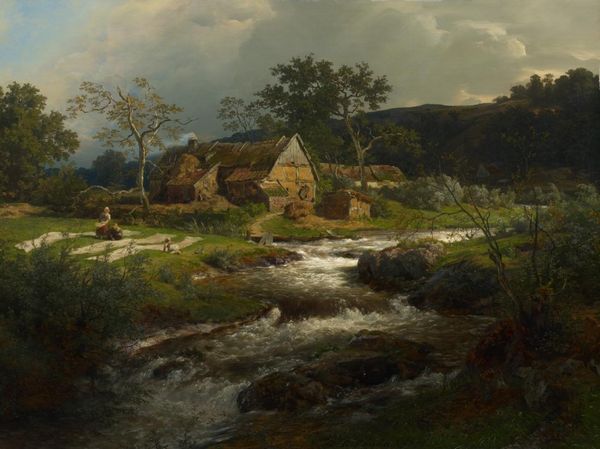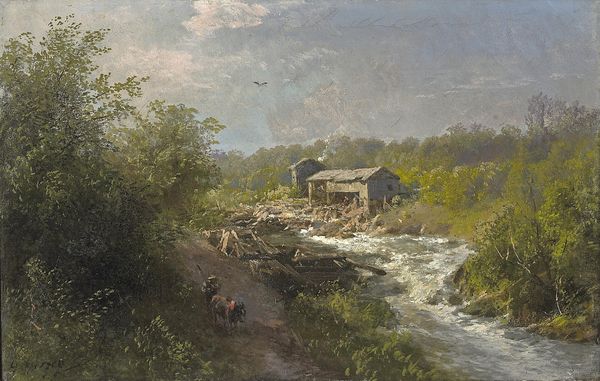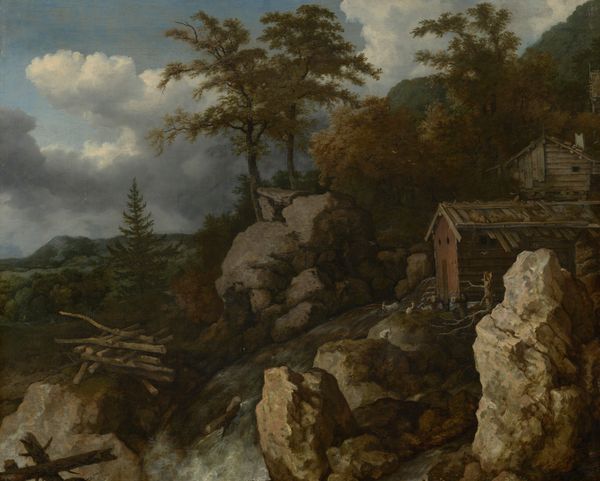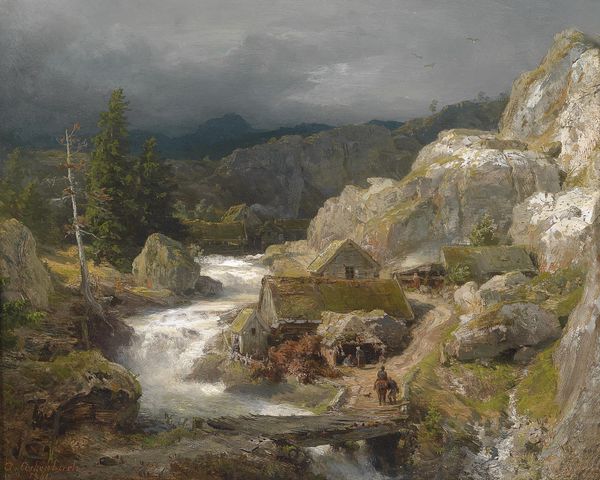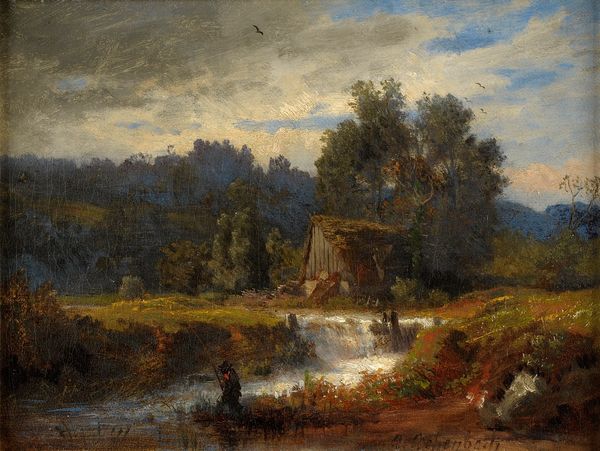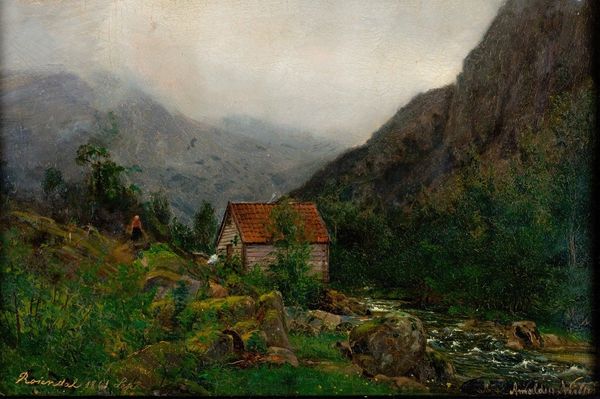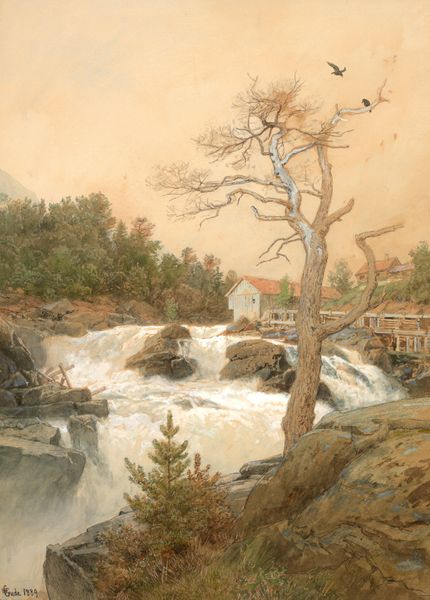
painting, oil-paint
#
painting
#
oil-paint
#
landscape
#
charcoal drawing
#
oil painting
#
romanticism
#
hudson-river-school
#
charcoal
#
watercolor
#
realism
Copyright: Public domain
Curator: What a powerfully moody painting. Hermann Ottomar Herzog's "Mill on a Torrent" captures such dramatic light. What’s your first take? Editor: Turbulent. The eye is immediately drawn to the roiling water—its energy dominates everything. You can almost hear the roar. It speaks to the raw power of nature harnessed, though precariously, by that mill. Curator: Herzog was, in many ways, a painter of his time, embodying the late strains of Romanticism. The Hudson River School influence is undeniable, you know. It emphasizes the sublimity of untamed landscapes and man’s humble place within them. Think about the role art played in shaping American identity and its relationship to the land, particularly during a period of rapid industrialization. Editor: True. And that makes me consider the actual physicality of the mill. Note the texture, the roughness of the wood against the smooth, rushing water. There's such deliberate rendering here—this speaks to the labour involved, the social context of milling and the communities that rely on such structures. Look closely and you'll discern charcoal, or other drawings. Curator: I’d say the light certainly romanticizes the scene. That impending storm suggests nature’s volatile temperament. It’s a testament to the emotional impact Herzog creates, tapping into the then-contemporary anxieties surrounding the human relationship with the environment. There’s a commentary embedded on the vulnerability of human endeavor against nature's forces, a constant theme of this historical period. Editor: Perhaps. But the materiality is unavoidable too. What kind of wood was used? Who were the people constructing this? This wasn't just about aesthetic awe—it was about very real labor and interaction with material constraints and what this reveals about class. What about consumption and demand? Where does the milled grain end up? The river connects the town to the farmlands. Curator: So, are you suggesting it's less about sublime experience and more about examining production methods? I concede both aspects resonate. Editor: Exactly! By attending to both, we reveal a more layered appreciation of Herzog’s world. Curator: Indeed. This work, therefore, exists as a compelling study bridging artistic experience and material understanding of our interactions. Editor: I concur. A vivid reminder that art never exists in a vacuum; it reflects and affects material culture and social realities.
Comments
No comments
Be the first to comment and join the conversation on the ultimate creative platform.
